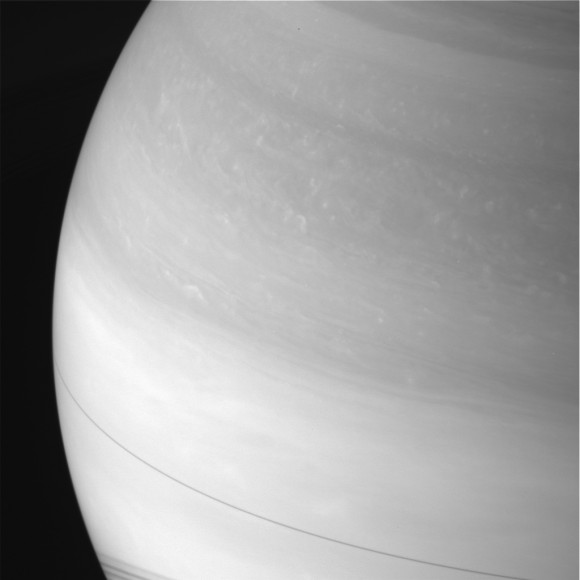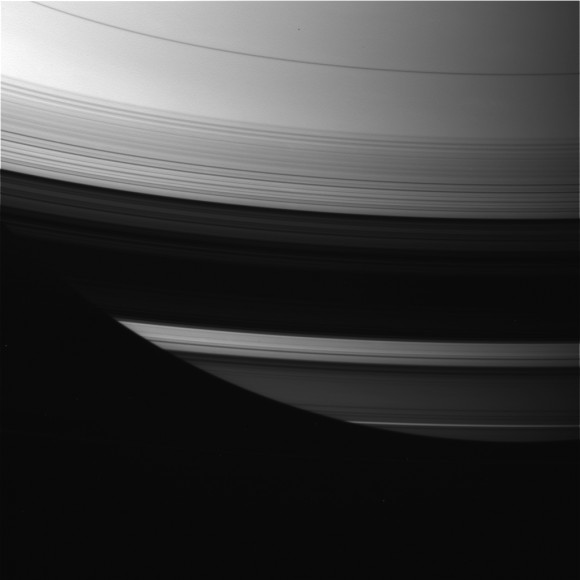Last Thursday, Saturn reached the equinox, which occurs once every 15 Earth years. This time the Cassini spacecraft was there to take pictures from the right angle

NASA released several images taken by the Cassini spacecraft immediately after the equinox on August 12, 2009.
The planet looks naked without the rings, but don't worry, the rings are still there, but we can only see them as a thin line. This is due to the fact that the sun shines directly through the rings on Saturn's equinox, and that the spacecraft was also in the right place. The equinox, like on Earth, occurs once every six months, except that a Saturnian half year is about 15 Earth years long. The equinox occurs when the sun is above the equator, which in Saturn is also the plane of the rings.
The geometry of the lighting accompanying the equinox is as follows: the sun lowers and is above the plane of the rings and causes bodies outside this plane - mainly moons as well as certain constellations within the rings to cast a long shadow on the rings.
The shadows of the rings quickly became a narrow strip above the planet. The scientists have already begun to study the raw images to make new discoveries about Saturn's ring system. They hope to discover through these photographs new moons and unique formations in the rings that are difficult to discover in any other way.

In the second picture taken a little later, when the spacecraft changed its angle a little, you can already see the rings in visible light.
The previous equinox occurred in 1994, but then there was no spacecraft near Saturn. This time the scientists prepared and aimed Cassini at the right angle on the right day.

4 תגובות
to N.C
Your question is not really clear to me.
After all, the speed of the linear movement of Saturn and the speed of the linear movement of its rings around the Sun is the same (on average). That is why they move together and not separate.
Besides the linear speed of Saturn and its rings, around the Sun, they also perform a rotational movement around their common center of mass.
I see no support for your claim that Saturn should move linearly, faster than its rings.
For response 2,
It seems to me that if you have studied Newton's laws this should answer your question.
I have a question about Saturn's rings:
As we know, the speed of Saturn around the Sun is much faster than the speed of the Earth around the Sun.
The logic says that Saturn had to "acquire" its rings that are "in front" of it in its progress around the sun and move away, even a little, from the part of its rings that are "behind" it and related to it by force
Gravitation.
But if his progress in his path is when the rings are perpendicular to him, even then in my opinion it was because of his speed
Saturn should at least "acquire" its rings somewhat and leave them slightly behind it and not really around it
through him.
Of course the reality is not like that. Where is my mistake?
It looks like a photoshopped image
Quality on the face